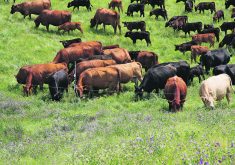Living in Saskatchewan for a livestock producer has numerous challenges.
First of all, inputs have narrowed on any profit margin they had. Marginbased programs the government put in place don’t work at all.
They repeat the story about prices are going up a bit, probably about five percent to match inputs that went up 70 percent.
The Saskatchewan Party did give the cattlemen $40 per cow. That is $40 per cow more than the NDP gave through the entirety of the BSE dilemma.
However, that translates into almost $5.50 per year for seven years. It costs the farmers $400 per cow per year to feed her.
Read Also

U.S. government investigates high input costs
The USDA and DOJ are investigating high input costs, but nothing is happening in Canada.
In 2009, Mr. Bjornerud announced a $20 payment per coyote to cut down on the predator population.
It worked very well but no one realized how many coyotes moved into the province from neighbouring developments. Also no fur trappers.
Now the crop insurance corporation handles a livestock loss program.
There is quite a difference between a killed animal and a sample of wheat. They do send livestock people to the kill site but the grain manager can overrule any suggestions from anyone. Therefore some claims are not compensated.
If you have no carcass you don’t qualify, so I’m estimating they are paying about 40 percent of the actual losses.
The total number paid out will seem high but we must remember the total losses have totalled two and a half times the number on the government cheque and the producers have lost the big number every year.
There is less pasture livestock and less farmers so the coyotes will be moving into urban populations, so when cats and house dogs start to disappear, the government will have to give this program more attention.
It is sad to see our neighbouring provinces do not have programs in place to cut their coyote population.
Years ago, the hired men needed more money than the wages they got so they used big dogs and horse teams to catch the problem coyotes. The pelts paid them as good as their wages.
The dogs killed them as humanely as possible. No wounded ones got away.
Now we use traps and snares. We do catch young dumb ones but the old veterans get past this.
I think we have to go back to the dog world.
Murray Andres,MacNutt, Sask.














